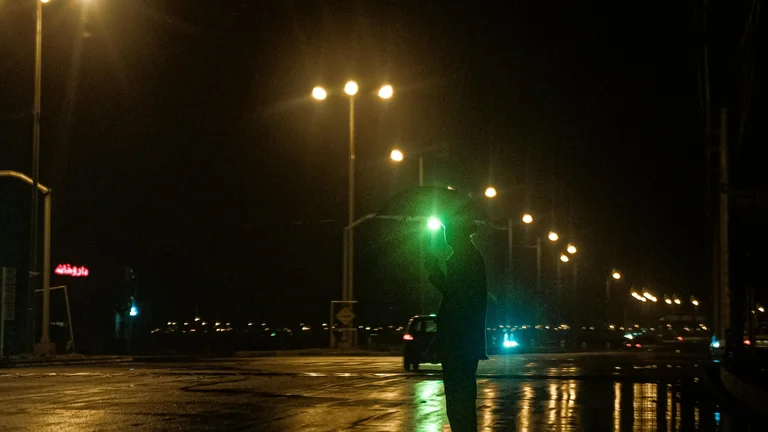
The motif of "running to the airport" in Korean dramas, known as K-Dramas, has become an iconic and deeply emotional symbol that resonates with audiences worldwide. This recurring cinematic trope encapsulates the intense urgency, desperation, and often bittersweet moments experienced by characters during pivotal turning points in the narrative. Acknowledging the cultural significance and storytelling power behind these scenes reveals layers of narrative technique, character development, and emotional engagement that are central to why K-Dramas captivate millions. The "running to the airport" sequence is not just a visual spectacle; it is a complex device that embodies themes of love, separation, fate, and human vulnerability, often becoming the defining image of the drama itself.
At the core, these scenes manifest the dramatic tension surrounding departures and arrivals, moments which mark shifts in relationship dynamics or the climax of unresolved emotions. The airport, as a physical space, symbolizes both departure and reunion — a gateway between different worlds and emotional states. Characters sprinting through terminals, weaving through crowds, chasing after closing gates create breathtaking tension. This cinematic choice amplifies emotional stakes, often revealing vulnerabilities or unspoken feelings at their most raw. It is an approach that harmonizes visual urgency with narrative urgency.
Many renowned K-Dramas have utilized airport sprint sequences to highlight the protagonists' inner conflicts and desires, effectively drawing viewers into an immersive experience of hope, regret, and longing. These scenes can culminate in reunions filled with tears, heartfelt confessions, or anguished goodbyes, each variation serving a distinct narrative function while preserving the thematic core of separation and connection. Across different dramas, the aesthetics of lighting, pacing, background score, and choreography of movement work in synergy to enhance the poignancy of these moments. They create a shared emotional lexicon familiar to devoted viewers while inviting new audiences to understand the cultural symbolism behind these emotional chases.
Historical Evolution and Cultural Significance of Airport Running Scenes
The use of airports as a dramatic setting has evolved alongside South Korea's modernization and global connectivity. In earlier Korean melodramas, physical separations were often conveyed through train stations, bus terminals, or letters. With the rise of air travel as an accessible mode of transportation and the globalization of Korean culture, airports emerged as dynamic spaces perfectly suited for cinematic drama. The airport represents movement, escape, transition, and sometimes a point of no return, making it an evocative symbol in storytelling.
K-Dramas began weaving airport scenes more prominently from the late 2000s onward, coinciding with the Korean Wave (Hallyu) phenomenon, which internationalized South Korean pop culture including dramas. Upon this backdrop, the airport running scene became something almost ritualistic—a visual shorthand for characters fighting against fate to be together or forced apart. It is important to contextualize this emphasis in the cultural and social realities of Korean society, where themes of sacrifice, familial duty, and perseverance permeate narrative frameworks. Airports in these dramas evoke not merely physical separation but often emotional or societal divides.
This trope’s power is grounded in its relatability; many viewers have experienced the emotional turmoil of seeing loved ones off or rushing to catch something that may be lost forever. The scene’s widespread recurrence also leans on collective memory and audience expectations, creating a cycle of homage and innovation. K-Dramas often subvert or reinforce this trope through careful variation, using the airport run to symbolize new beginnings, missed chances, or desperate last moments of connection.
Key Examples of Iconic Running to the Airport Scenes in K-Dramas
Several K-Dramas have etched unforgettable moments into fans’ memories by using the "running to the airport" scene with remarkable intensity and creativity. Each varies not only in plot consequences but in emotional tone, visual style, and narrative context, crafting diverse interpretations of this motif.
One classic instance appears in "Boys Over Flowers" (2009), where the male lead races through the bustling airport terminal to stop the female lead from leaving the country, unveiling a critical turning point in their tumultuous relationship. The choreography of his frenzied sprint amidst the crowded, fast-paced environment amplifies the stakes and his desperation, synchronized perfectly with the musical score. The audience experiences a simultaneous crescendo of anxiety and relief, typical of the genre’s heightened emotionality.
Similarly, "Crash Landing on You" (2019–2020) later utilized airport running in more layered ways, mixing comedic timing with genuine heartbreak. The narrative explored cross-border tensions between North and South Korea, and the airport scenes symbolized more than just romantic conflicts—they stood for larger socio-political barriers. When characters sprint along corridors, it is not merely love they chase but also elusive peace and understanding, magnifying the trope’s resonance beyond personal drama.
In "Descendants of the Sun" (2016), the airport running scene combines heroism and romantic urgency. The soldiers’ fast-paced chase to prevent a final separation highlights the drama’s central design of juxtaposing duty with personal affection. The setting itself, often a chaotic, noisy space, contrasts with the intimacy of the protagonist’s emotions, enhancing viewer empathy through visual and narrative contrast. This demonstrates the trope’s flexibility in adjusting to various genres and plotlines.
Another memorable moment occurs in "While You Were Sleeping" (2017), where supernatural elements infuse the otherwise archetypal scene with unique tension. The protagonists’ race against time in the airport is underscored by premonitions and impending tragedy, shifting the scene from a simple romantic pursuit to a metaphysical confrontation with fate. Such innovation revitalizes the trope and shows its adaptability to complex storytelling layers, blending fantasy and grounded human experience.
Visual and Cinematic Techniques Enhancing Airport Running Scenes
These scenes rely heavily on specific cinematic techniques to heighten emotional impact and narrative clarity. Directors commonly employ steady cams or tracking shots following characters to give a visceral, immersive sensation akin to running with them. Close-up shots capture beads of sweat, expressions of anguish or determination, and the subtle body language communicating unspoken urgency. The editing rhythm often accelerates as characters edge closer to gates or potential loss, synchronizing with music to control tension.
Lighting plays a crucial role by contrasting the cold, sterile environment of airports with warm, natural light during moments of intimacy or hope. Some directors utilize slow-motion shots to accentuate fleeting glances or gestures, allowing viewers to dwell on the characters’ emotional state before the inevitable outcome. Sound design complements visuals with ambient airport chatter, announcements, and the soundtrack’s crescendo adding layers of realism and thematic emphasis.
The architecture of airports themselves serves as a narrative device. Wide open concourses evoke a sense of exposure and vulnerability, while narrow corridors or escalators create claustrophobia and urgency, visually mirroring the characters’ internal struggles. Symbolism such as closing gates, departing planes, and bustling crowds frequently punctuate the scenes, reminding audiences of passage and the irreversible nature of time.
The coordination of choreography—how actors navigate the space—is vital in sustaining suspense. Unpredictable obstacles like luggage carts, strangers, and security barriers increase tension and realism. The interplay between movement and stillness, where one character pursues and the other may remain frozen or conflicted, deepens the narrative complexity of these sequences.
Psychological and Emotional Dimensions Behind the Scenes
Beyond the visual spectacle lies a profound exploration of human emotions and psychology pivotal to these moments’ effectiveness. Characters sprinting to the airport often embody vulnerability, hope, refusal to accept loss, or last-ditch efforts to rewrite fate. These actions communicate primal emotions—the fear of abandonment, yearning for connection, and courage to defy odds.
The psychology behind these scenes involves the paradox of choice and consequence. Just as the physical act of running suggests control and agency in a chaotic setting, it also signifies desperation and helplessness. Characters are often caught between two worlds—what they want and what circumstances dictate—mirroring struggles many viewers face in real life, whether in relationships, career decisions, or personal growth.
These scenes can invoke catharsis, providing emotional release for both characters and audiences. Viewers experience identification through shared feelings of longing or regret, leading to a deeper engagement with the plot and characters. The suspension of time and heightened focus on minute emotional detail facilitates empathy and reflection on universal themes like missed opportunities and reconciliation.
From a narrative psychology perspective, the airport run often segments a character's arc: a moment of decision where past choices culminate and future paths are determined. It can be a moment of epiphany where characters confront their true feelings, dilemmas, and values, often leading to transformation or acceptance. This makes the scene pivotal in the drama’s emotional architecture and pacing.
Step-by-Step Breakdown of Constructing an Iconic Airport Running Scene in K-Dramas
Creating a memorable airport running sequence involves several carefully orchestrated elements. Following a step-by-step approach reveals how production teams and directors achieve the emotionally charged results that resonate so strongly with audiences.
- Script Development: Writers draft scenarios where the airport scene functions as a plot catalyst. Key considerations include the timing in the narrative, character motivations, and the emotional stakes attached to the moment.
- Location Scouting: Appropriate airports or terminal sets are selected to accommodate filming needs—space for dynamic movement, camera equipment, lighting rigs, and crowds. The aesthetics of the chosen site set the mood and period authenticity.
- Casting and Rehearsal: Actors rehearse intensive sequences focusing on timing, gestures, and expressions. Physical conditioning helps actors execute runs convincingly while maintaining emotional presence.
- Cinematography Planning: Directors and DPs decide on camera angles and movement, such as tracking shots or crane work, to support immersion without disorienting viewers. Lighting schemes are designed for visual contrast and thematic reinforcement.
- Choreography and Blocking: Movement paths are plotted to maximize dramatic tension, considering obstacles, crowd interactions, and spatial limitations. Timing of entrances, exits, and key interactions are synchronized.
- Sound Design and Music Selection: Sound engineers produce layered ambient noises reflective of airports, while music composers score pieces that align with emotional beats and tension escalation.
- Filming and Multiple Takes: Scenes are filmed repeatedly to capture varying intensities and precise timing, providing editors with options for pacing and emphasis.
- Editing and Post-Production: Editors assemble footage, adjust pacing, incorporate sound effects, and fine-tune visuals. Color grading enhances mood, and slow-motion or special effects are added if needed.
- Audience Testing and Adjustments: Trailers or preview cuts may be shown to select viewers to gauge impact, leading to possible refinements before broadcast.
Table: Comparison of Iconic K-Dramas Featuring Airport Running Scenes
| Drama Title | Year | Genre | Emotional Tone | Scene Outcome | Unique Elements |
|---|---|---|---|---|---|
| Boys Over Flowers | 2009 | Romantic Comedy/Drama | Desperate, Hopeful | Reunion and Confirmation of Feelings | High-paced chase through crowded airport |
| Crash Landing on You | 2019–2020 | Romantic Drama, Political | Bittersweet, Complex | Symbolic of Sociopolitical Barriers | Mix of comedy and tragedy with cross-border theme |
| Descendants of the Sun | 2016 | Action, Romance | Urgent, Heroic | Prevention of Separation | Military context elevating stakes |
| While You Were Sleeping | 2017 | Fantasy, Romance, Thriller | Tense, Foreboding | Foreshadowing of Tragedy | Supernatural elements combined with emotional urgency |
| My Love from the Star | 2013–2014 | Sci-Fi, Romance | Melancholic, Determined | Last Moment of Connection | Blend of fantasy with romantic farewell motif |
Psychological Effects on Audience Engagement
These scenes leverage psychological triggers to deeply engage viewers. The airport run triggers a fight-or-flight response in audiences, mirrored subconsciously as characters struggle against time and circumstance. Studies in narrative psychology suggest that such moments stimulate empathy, reduce emotional distance, and increase narrative immersion. The unpredictability of whether the characters succeed or fail keeps viewers on edge, inviting active emotional participation rather than passive observation.
Repeated exposure to the trope across multiple dramas creates a cognitive template where fans anticipate emotional catharsis, making these sequences highly memorable and shareable. They often spark discussions in social media communities, furthering a drama’s cultural footprint. When scenes deviate cleverly from expectations, the surprise element intensifies emotional payoff, evidencing thoughtful craftsmanship by content creators.
List: Essential Elements That Make Airport Running Scenes Iconic
- Urgency of Emotion: Characters must convincingly display a compelling reason, typically tied to love or family, driving their desperate rush.
- Visual Dynamics: Fluid camera movements and pacing that mirrors the characters' emotional turbulence.
- Symbolism: Physical barriers like gates or security checks symbolize emotional or social obstacles.
- Soundtrack: Music selection that amplifies intensity without overpowering the scene.
- Choreography: Realistic navigation through crowded, dynamic spaces adding tension and authenticity.
- Lighting and Set Design: Use of contrasting light and spatial elements to enhance mood and focus.
- Character Expressions: Subtle facial cues communicating fear, hope, regret, or determination.
- Outcome Impact: Scene ramifications must influence overall plot arcs meaningfully.
Impact of Airport Running Scenes on Global K-Drama Reception
The global appeal of K-Dramas owes much to their ability to convey universal experiences through culturally specific symbols, with airport running scenes exemplifying this skillful blend. International viewers, regardless of background, relate to themes of separation and reunion, making these sequences emotionally accessible and impactful beyond language barriers.
Such scenes serve as viral moments, often featured in highlight reels and shared extensively on platforms like YouTube and TikTok, driving global fandom communities. The visual and emotional clarity of the airport rush makes it an excellent tool for engaging viewers quickly, crucial in an era dominated by short attention spans.
Moreover, as streaming platforms invest more in Korean content, the iconic status of these scenes helps sustain viewer interest and increases cultural exchanges. The scenes often contribute to tourism interest, as airports featured in dramas become pilgrimage sites for fans. Consequently, the airport running scene has become not only a dramatic device but a cultural export emblematic of the K-Drama phenomenon.
Table: Emotional Themes Linked to Airport Running Scenes Across Different K-Dramas
| Theme | Description | Example K-Drama | Scene Function |
|---|---|---|---|
| Desperation | Conveying urgent need to prevent loss or separation | Boys Over Flowers | Climactic reunion effort |
| Hope and Reconciliation | Belief in second chances despite adversity | Crash Landing on You | Breaking sociopolitical barriers |
| Duty versus Personal Desire | Conflict between professional obligations and emotional needs | Descendants of the Sun | Choosing love despite risks |
| Fate and Free Will | Tension between destiny and characters' own choices | While You Were Sleeping | Contesting or accepting outcomes |
| Farewell and Loss | Emotional goodbyes and acceptance of separation | My Love from the Star | Melancholic parting moment |
Practical Applications and Influence on Contemporary Filmmaking
The success of airport running scenes in K-Dramas has influenced not only South Korean productions but global filmmaking approaches to depicting emotional urgency and character conflict. Directors from various countries have adopted analogous sequences in dramas, movies, and television series, symbolizing emotional turning points through physical pursuits in transit spaces.
Filmmakers studying K-Dramas consider the combination of spatial choreography, pacing, and emotional framing as a case study in maximizing tension within constrained environments. This results in more dynamic portrayals of farewell and reunion scenes distinct from traditional static dialogues. Airport sequences have inspired narrative devices extending to train stations, bus stops, and even digital communication pursuits, reflecting the lasting impact of this visual storytelling methodology.
For aspiring directors or writers, understanding the nuances of airport running scenes provides insight into balancing spectacle with character depth. The ability to integrate physical movement with psychological arcs is a lesson in layered storytelling, where surface tension serves deeper narrative purposes. The airport run becomes a microcosm of the drama itself—fast-moving, emotionally charged, teetering between hope and despair.
List: Step-by-Step Guide to Create a Compelling Airport Running Scene
- Develop clear emotional stakes: Define why the character must run to the airport, establishing urgency.
- Map out key obstacles: Plan physical barriers that visually and narratively heighten tension.
- Select appropriate location or set: Ensure spaciousness and logistics support dynamic filming.
- Coordinate actor movements: Rehearse precise timing, expression, and path navigation.
- Design camera work: Utilize tracking shots and close-ups to maintain immersion.
- Incorporate sound and music: Add atmosphere reinforcing mood without distraction.
- Edit for pacing: Balance fast sequences with moments of emotional focus.
- Include symbolic details: Gates, flights, luggage, or clocks representing intangible stakes.
- Test with audiences: Gauge emotional reaction, refine if necessary.
By adhering to this guide, creators can reproduce or innovate on this iconic scene type, ensuring it remains a powerful emotional and narrative tool within K-Dramas and beyond.
Final Reflections on the Enduring Appeal
The continuous popularity of airport running scenes in K-Dramas signals their deep-rooted narrative and emotional significance. Beyond simple plot devices, they channel universal human experiences—anticipation, separation, reunion, and the fight against impermanence. For viewers, these scenes crystallize emotions that often evades words, becoming cultural landmarks within the collective entertainment experience.
Cinematic craftsmanship in these scenes has elevated a simple setting into an arena of profound storytelling possibilities. Their iconic status endures because of their ability to marry urgency with intimacy, chaos with clarity, motion with stillness. This balance keeps audiences returning for more, eager to relive the rush, the hope, and the heartbreak embedded in every sprint to the airport.
FAQ - Iconic “Running to the Airport” K-Drama Scenes
Why are airport running scenes so common in K-Dramas?
Airport running scenes are used to visually represent critical emotional moments of separation and reunion. They leverage the universal experience of departures and arrivals to heighten narrative tension, emphasizing urgency, hope, or heartbreak central to many K-Drama storylines.
What emotional impact do these scenes have on viewers?
These scenes trigger strong empathy and suspense by depicting characters fighting against time and fate to be with loved ones. The combination of physical pursuit and emotional stakes fosters deep connection, catharsis, and memorable viewing experiences.
Are there common cinematic techniques used in airport running scenes?
Yes, frequently used techniques include tracking shots following the characters, close-ups of intense expressions, slow-motion moments to emphasize significant gestures, ambient airport sounds, and music scores that guide the emotional pacing.
How do airport scenes symbolize more than just physical departure in K-Dramas?
Airports symbolize transition, change, and the crossing of emotional or social boundaries. Scenes often represent characters' struggles with fate, societal constraints, and personal decisions beyond the literal act of leaving or arriving.
Can airport running scenes differ in tone or outcome?
Absolutely. While often portraying desperation and hope, some scenes incorporate comedic elements, tragic farewells, or even supernatural tension depending on the drama's genre and plot context.
What makes an airport running scene iconic in K-Drama culture?
Iconicity stems from emotional resonance, creative filming techniques, memorable character performances, and how pivotal the scene is to the overall narrative. When all these align, the scene becomes emblematic of the drama and genre itself.
Iconic "Running to the Airport" scenes in K-Dramas symbolize urgent emotions tied to separation and reunion, using dynamic visuals and cinematic techniques to create profound narrative impact. These moments resonate universally, reflecting themes of love, fate, and hope, making them essential facets of Korean drama storytelling.
Airport running scenes in K-Dramas have evolved into compelling narrative devices that embody universal feelings of urgency, love, and separation. Their power lies in combining visual motion with deep emotional undercurrents, supported by meticulous cinematic craftsmanship. These sequences maintain enduring cultural relevance, enhancing character development and enriching storytelling across diverse genres. As an iconic symbol within Korean drama, they continue to captivate audiences by portraying the human struggle to reconcile fate and desire in moments of parting and reunion.






